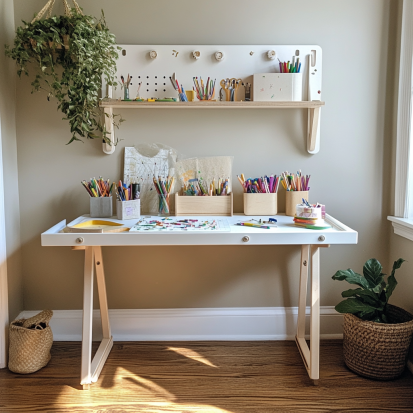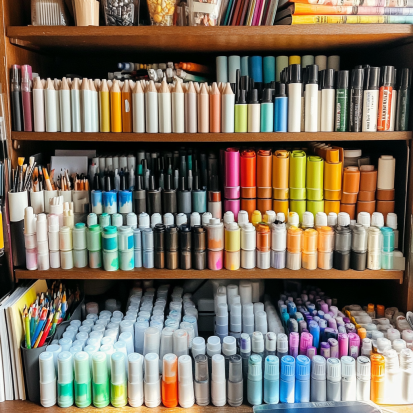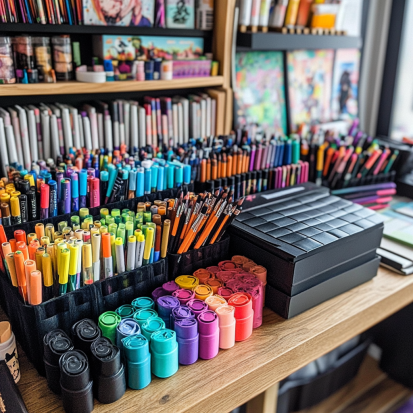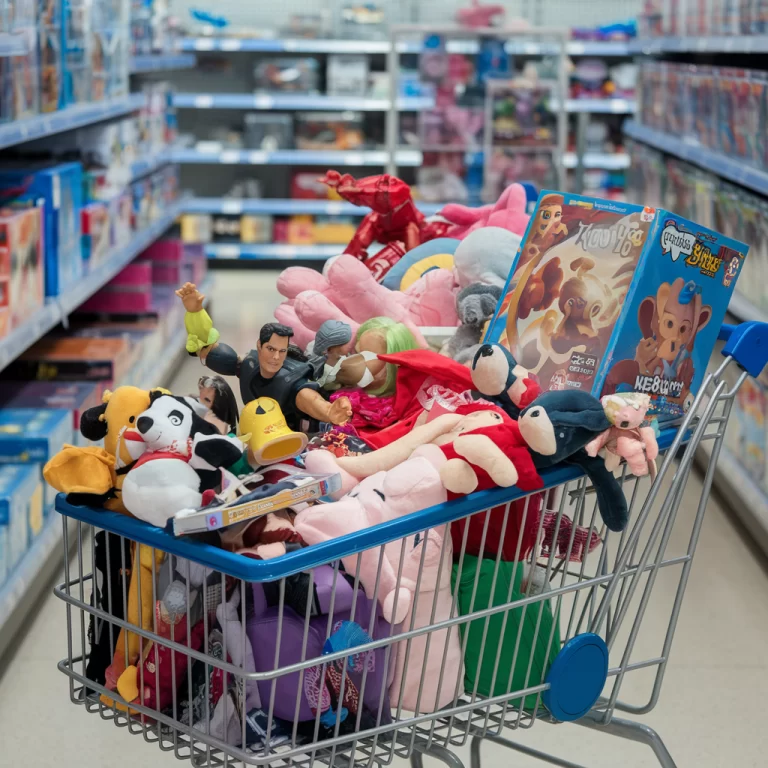How to Encourage Creativity

Encouraging creativity in children is one of the most important gifts we can give them. Not only does it play a crucial role in their cognitive and emotional development, but it also lays the foundation for problem-solving skills, emotional expression, and the ability to view the world from multiple perspectives. Creativity goes beyond just making art, it’s about fostering a mindset that encourages curiosity, experimentation, and innovation.
As parents, we often wonder how to seamlessly incorporate creativity into everyday life, especially when our schedules are packed and we’re not exactly art teachers or professional crafters. But here’s the good news: creativity doesn’t require endless Pinterest-worthy projects or complicated plans. In fact, it thrives in the simplest moments and the most ordinary activities. The key is to create an environment that sparks imagination and gives children the freedom to explore.
Parenthood teaches that creativity can be woven into the fabric of daily life in ways that are both manageable and deeply meaningful. In our home, we’ve made creativity part of our everyday routine, and it’s often the small, spontaneous moments that lead to the greatest bursts of ingenuity. Whether it’s through a quick craft project, imaginative play, or letting them take the lead in their own creative adventures, these experiences allow my children to think outside the box, solve problems, and express themselves in ways that help them grow into confident, well-rounded individuals. From arts and crafts to imaginative play, these ideas will help spark your child’s creativity while keeping things fun and engaging for the whole family.
Here’s how I do it and some tips I’ve found helpful along the way.
1. Encourage Storytelling Through Imaginative Play
One of the most underrated and powerful ways to foster creativity in children is through imaginative play. Unlike structured activities that follow specific rules, imaginative play opens the door for kids to explore new worlds, invent stories, and experiment with various roles, all from the comfort of home. Whether they’re dressing up as superheroes or transforming the living room into a pirate ship, this type of play gives them the freedom to think creatively and express themselves in ways that traditional activities often don’t allow.
Try creating “pretend play” stations that change based on whatever world the kids want to explore that day. One day, the couch becomes a spaceship, launching them on a journey to the moon where they’re brave astronauts navigating the stars. The next day, they’re veterinarians running a pet clinic, tending to their stuffed animals, giving them checkups, and making sure every “patient” gets the care they need.
What makes imaginative play so special is that it doesn’t require much in terms of materials. The beauty lies in the fact that the possibilities are endless and driven entirely by the children’s imaginations. A blanket thrown over a table can instantly become a castle, a fort, or a secret hideout. A simple box might turn into a time machine, transporting them to the past or the future. By providing a few basic props, things like hats, scarves, or empty boxes, kids can take their play in any direction they choose.
Actionable Tip: You can enhance imaginative play by setting the stage with minimal items that encourage them to create their own worlds. For example, keep a basket of dress-up clothes and accessories that they can easily grab. These don’t have to be fancy costumes, even old scarves, hats, and oversized shirts can spark an entire adventure. And don’t feel like you must guide the play; let your child take the lead in inventing the story-line and deciding what role each prop or piece of furniture will play.
Imaginative Play Benefits: Beyond just being fun, imaginative play fosters important skills. It encourages children to think flexibly, problem-solve, and develop social skills as they navigate different roles and scenarios. Whether they’re creating dialogue for their characters, building a new world in their minds, or coming up with rules for their pretend games, kids are learning how to structure their thoughts, communicate effectively, and adapt to changing circumstances, all while having a blast.

2. Create an Art Station with Accessible Materials
Children thrive when given the freedom to express their creativity at any moment, which is why having an accessible art station at home can be a meaningful change. To set up an art station, find a corner or a small nook in your home where you can organize basic supplies like paper, crayons, markers, colored pencils, scissors, glue sticks, and stickers. For added variety, you can include craft items like pipe cleaners, googly eyes, and fabric scraps, or even recyclables like cardboard tubes and egg cartons for building projects. The goal is to provide a variety of tools that allow your child to explore different forms of creativity, whether that’s drawing, cutting, pasting, or constructing.
The most important aspect of this space is accessibility. Children should feel empowered to grab materials and start creating without needing constant permission or help. If you have young children, make sure that the supplies are safe and age-appropriate, but still easy for them to access on their own.
Pro Tip: Invest in small bins or clear storage containers so that everything stays organized, and kids can easily see their options. You can even rotate materials every few weeks to keep things fresh and exciting. For example, one week you might offer watercolor paints, and the next week, introduce modeling clay or a fresh batch of craft paper. This way, the art station stays dynamic, keeping your children engaged and eager to experiment with innovative ideas.
3. Incorporate Creativity into Routine Activities
It’s easy to think that creativity only happens during designated craft times, but it can be woven into everyday activities as well. Cooking, for instance, can be an excellent opportunity for children to experiment. I often let my girls help me bake or cook simple meals, where they get to mix ingredients and see how different elements come together to create something new. It also helps them understand the importance of following steps while leaving room for fun and experimentation.
Gardening is another simple activity that stimulates creativity.
4. Set Up Open-Ended Projects
Open-ended projects, activities without a set outcome, are perfect for encouraging children to think freely and explore different possibilities. Instead of telling kids exactly what to do, give them the tools and let them lead the way.
For example, provide a random assortment of materials, like cardboard tubes, fabric scraps, and buttons, and letting them build whatever comes to mind. The results are always unique, and I can see their confidence grow as they make decisions and create something all their own.
Tip: Don’t focus on the final product; focus on the process. The goal is not perfection, but exploration. Offer positive feedback for their efforts and curiosity, rather than pointing out areas that don’t align with your expectations.

5. Celebrate The Little Things
One of the most powerful ways to encourage ongoing creativity is by celebrating your child’s work. Experiment with a dedicated “art wall” where you can display the latest creations. It gives them a sense of pride and ownership over their artwork, encouraging them to keep creating.
Additionally, asking them to explain their creations, whether it’s a drawing, a Lego structure, or a story, helps them think critically about what they’ve made and why. It also encourages communication skills and allows them to reflect on their creative process.
6. Let Them Be Bored
It might seem counterintuitive in today’s fast-paced world, but boredom can be a powerful catalyst for creativity. With so many forms of instant entertainment, screens, structured activities, and planned play dates, it’s easy to feel like kids need constant stimulation. However, some of the best, most original creative ideas appear from moments of stillness and quiet.
When my girls come to me saying, “I’m bored,” my first instinct is to jump in and offer suggestions or distractions to keep them entertained. But over time, I’ve learned to resist this urge. Instead, I encourage them to sit with that feeling of boredom and come up with their own solutions. These moments of downtime often force them to tap into their imaginations, whether they invent a new game, create an elaborate story with their toys, or dive into a spontaneous art project.
Boredom provides the mental space kids need to think independently and discover their own interests and ideas. It’s in these moments that they’re free to explore without direction or expectations, and that freedom often leads to creative breakthroughs. My girls have invented entire worlds with nothing more than a few dolls or blocks or created elaborate crafts from items they’ve found around the house, none of which would have happened if I had immediately provided an activity for them. Boredom isn’t something to be avoided, it’s an opportunity for your child to stretch their creative muscles and discover new ways of entertaining themselves. In a world full of distractions, learning to embrace moments of boredom might be one of the best ways to foster lasting creativity.
Actionable Tip: The next time your child says they’re bored, instead of offering an instant solution, ask them open-ended questions like, “What do you feel like doing right now?” or “What could you create with what you have?” This encourages them to think critically and problem-solve on their own. You’ll be amazed at how resourceful and inventive they can be when given the space to figure it out themselves.

Fostering creativity in children doesn’t have to be overwhelming or require hours of meticulous planning. In fact, some of the most meaningful creative experiences are often simple and spontaneous. The key is to create an environment that nurtures curiosity, exploration, and self-expression. Whether it’s through arts and crafts, imaginative play, or just giving your kids the freedom to let their minds wander, there are endless ways to unlock their creative potential, and it doesn’t require a Pinterest-perfect setup.
Creativity isn’t about producing a masterpiece every time; it’s about the process of discovery. By encouraging your child to explore different materials, try new activities, and make mistakes along the way, you are helping them build confidence in their ability to think outside the box. Simple activities, like drawing with crayons, making up stories, or even constructing a fort out of blankets, allow children to engage their imaginations and develop problem-solving skills. These small moments can lead to big breakthroughs in how they approach the world.
As a mom and an entrepreneur, I’ve come to realize that creativity is like a muscle, it grows stronger with use. And the earlier we begin nurturing this skill in our children, the better equipped they’ll be to handle life’s challenges with flexibility and imagination. Creativity isn’t just for artists or designers; it’s a crucial skill for anyone, whether they’re solving problems in a classroom, navigating social interactions, or later, finding innovative solutions in their careers.
One of the most important lessons I’ve learned is that fostering creativity isn’t about perfection or following rigid plans. It’s about creating opportunities for exploration and allowing kids to take the lead. Sometimes that means setting up a craft project with a loose framework, where the outcome is entirely up to them. Other times, it’s as simple as encouraging them to turn everyday activities into a playful, imaginative experience, like making up stories during bath time or building a city from blocks on a lazy afternoon.
You don’t need to fill every moment with structured activities. Give your child space to be bored and let their minds wander. That’s when their natural creativity really shines. Let them experiment, try new things, and even fail, because it’s through trial and error that they learn to innovate. It’s okay if their craft doesn’t look like what you expected or if their game has no clear rules, the point is that they’re learning how to think creatively, which is a skill that will serve them well throughout their lives.
So, whether you’re crafting together at the kitchen table or watching as your child transforms an ordinary day into an imaginative adventure, remember that creativity is about the journey, not the destination. Embrace the process and enjoy the joy and growth it brings, not just to your child, but to you as well. After all, there’s something truly magical about witnessing the world through a child’s creative lens.
Product Recommendations:
If you’re looking for some great tools to encourage creativity, I highly recommend these products that we love in our home:
- Play-Doh Starter Set: A timeless classic that promotes hands-on creativity.
- DIY Craft Kits from KiwiCo: These monthly boxes provide new, innovative projects that stimulate creativity and learning.
- Legos, bead kits, science kits, nail and makeup arts, create your own lip balm kit, and many more, are some additional options I have purchased at Walmart and Amazon.
Let the creativity flow!









